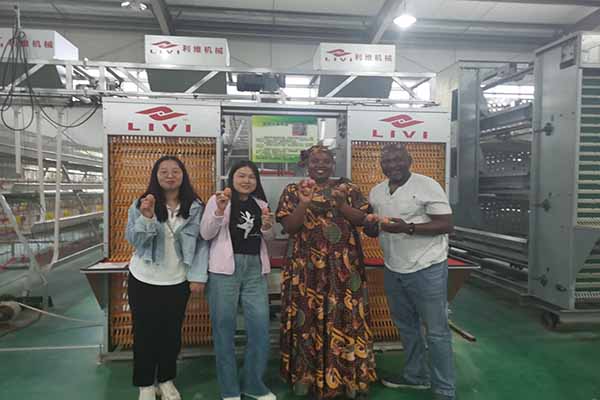The Automation Revolution: Kenya’s 20,000 Chicken Farm Implements an Advanced Feeding System
Time : 2025-07-02
Kenya, a country known for its rich agricultural heritage, has taken a significant leap towards modernization with the establishment of a 20,000 chicken farm equipped with an automated feeding system. This cutting-edge technology not only enhances the efficiency of poultry farming but also ensures the health and well-being of the chickens. In this article, we delve into the details of this automated feeding system, its benefits, and the impact it has on the poultry industry in Kenya.
Introduction to the Automated Feeding System
The automated feeding system installed at the 20,000 chicken farm in Kenya is a testament to the advancements in poultry farming technology. This system is designed to provide precise and consistent feeding to the chickens, thereby optimizing growth rates and overall health.
Components of the Automated Feeding System
1. Feeding Distributors: These devices are strategically placed throughout the farm to distribute feed to the chickens. They are automated to dispense the exact amount of feed required for each stage of the chicken’s growth.
2. Computer Software: The core of the automated feeding system is the computer software that manages the feeding schedule. It can be programmed to adjust the amount of feed based on factors such as the age, weight, and health of the chickens.
3. Sensors: High-tech sensors are used to monitor the feed consumption and chicken activity. This data is crucial for the system to make informed decisions about the feeding schedule.
4. Manual Override: In case of any technical issues or emergencies, the system is equipped with a manual override feature to ensure the safety and well-being of the chickens.
Benefits of the Automated Feeding System
1. Improved Feed Efficiency
The automated feeding system ensures that each chicken receives the exact amount of feed required. This reduces waste and maximizes the use of feed resources, leading to cost savings for the farm.
2. Enhanced Chicken Health
The consistent and balanced feeding provided by the automated system contributes to the overall health and well-being of the chickens. This, in turn, leads to higher productivity and better quality of poultry products.
3. Increased Productivity
With the automated feeding system, the farm can operate at a higher capacity. The system allows for better management of the chickens, leading to increased productivity and output.
4. Reduced Labor Costs
The automated system significantly reduces the need for manual labor in feeding the chickens. This not only cuts down on labor costs but also allows the farm to focus on other critical aspects of poultry management.
Implementation Process
The implementation of the automated feeding system at the 20,000 chicken farm in Kenya involved several key steps:
1. Feasibility Study: A thorough feasibility study was conducted to assess the potential benefits and challenges of implementing the system.
2. System Design: The design of the system was tailored to the specific needs of the farm, considering factors such as the size of the farm, the number of chickens, and the type of feed.
3. Installation: The system was installed with utmost precision, ensuring that all components were functioning correctly.
4. Training: The farm staff was trained on how to operate and maintain the automated feeding system.
5. Monitoring: Continuous monitoring of the system’s performance was carried out to ensure its effectiveness.
Impact on the Poultry Industry in Kenya
The introduction of the automated feeding system at the 20,000 chicken farm has had a ripple effect on the poultry industry in Kenya. Other farms are now looking to adopt similar technologies to enhance their operations.
1. Improved Industry Standards
The automated feeding system has set a new benchmark for poultry farming in Kenya, promoting better standards and practices.
2. Increased Adoption of Technology
The success of the system has encouraged other farms to invest in technology to improve their operations.
3. Job Creation
The implementation of automated systems has created new job opportunities in areas such as system maintenance, software development, and technical support.
Conclusion
The automated feeding system at the 20,000 chicken farm in Kenya represents a significant leap forward in poultry farming technology. Its benefits, both in terms of efficiency and chicken welfare, are undeniable. As more farms adopt similar technologies, the poultry industry in Kenya is poised for further growth and development.












